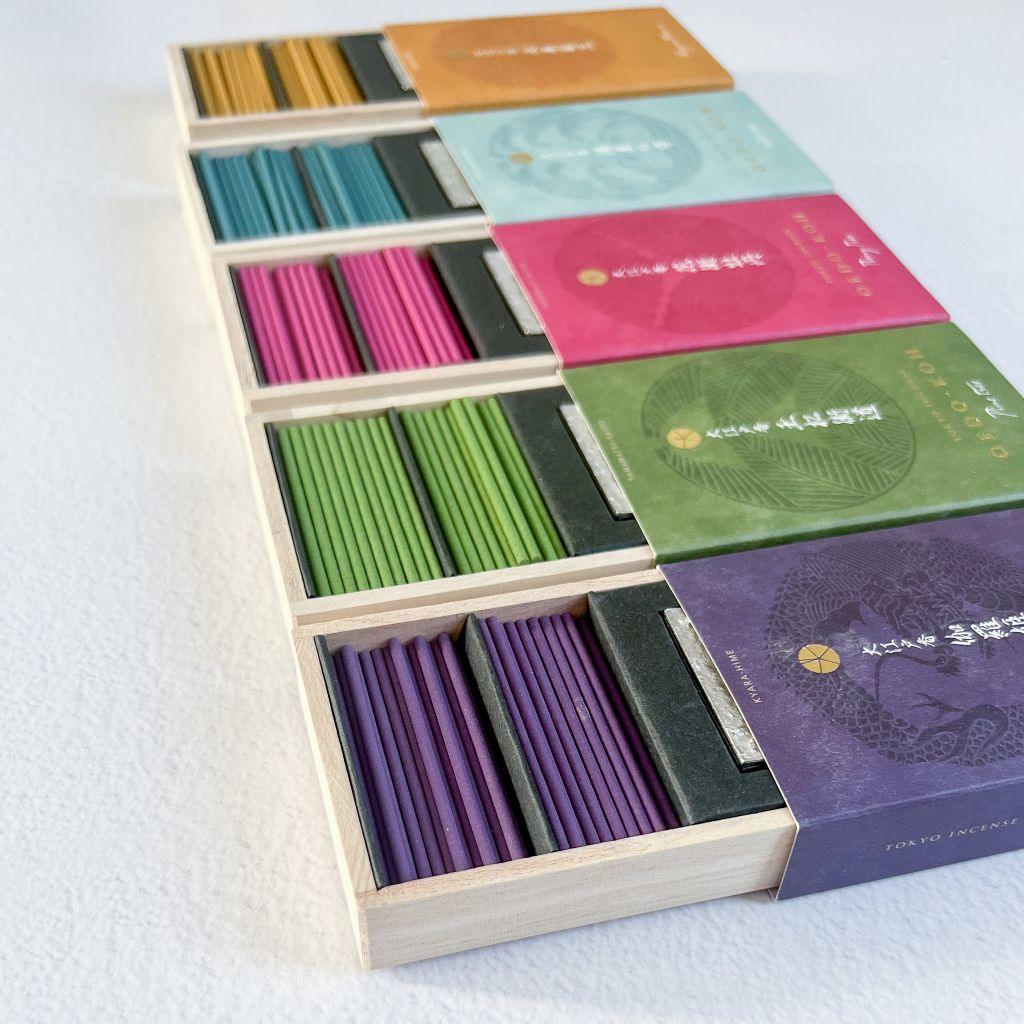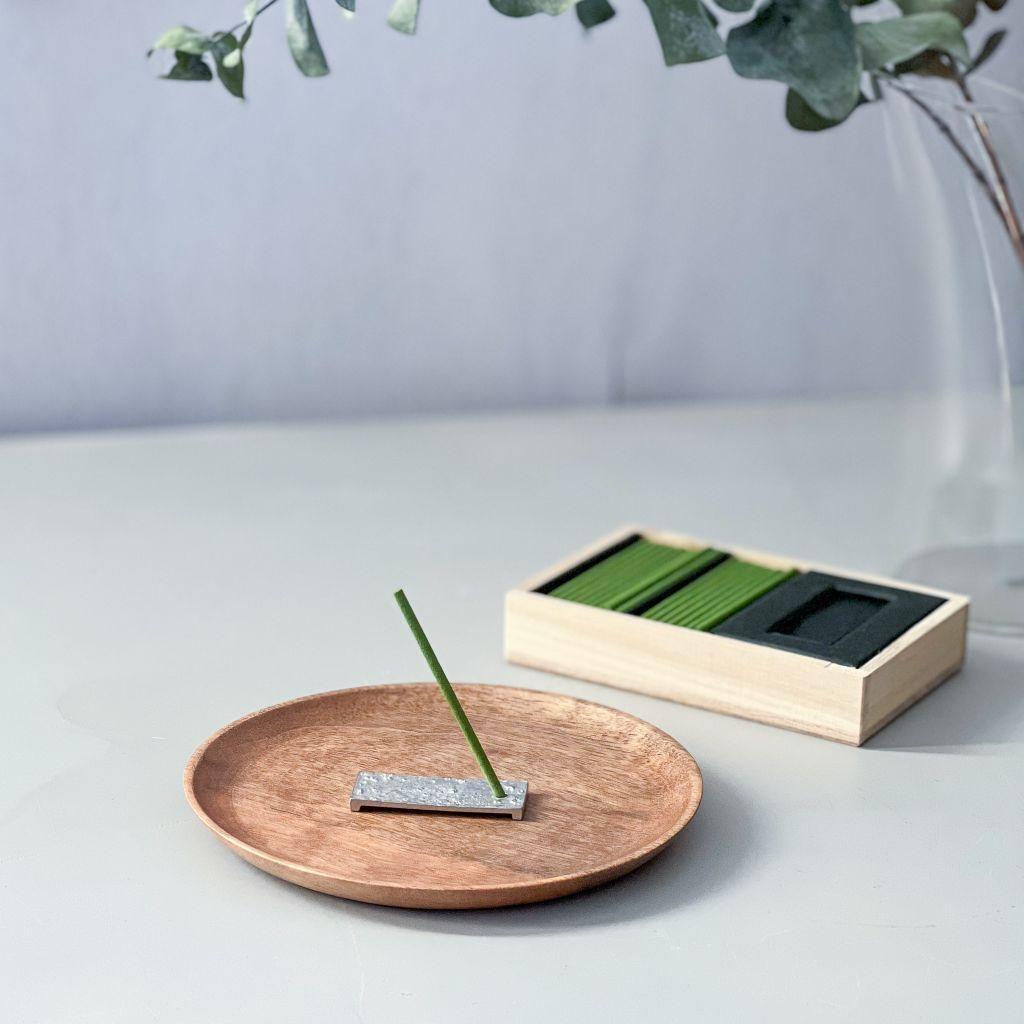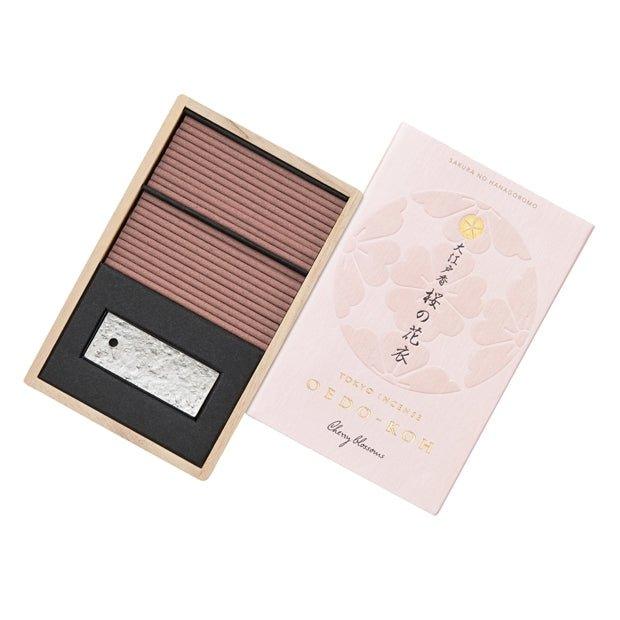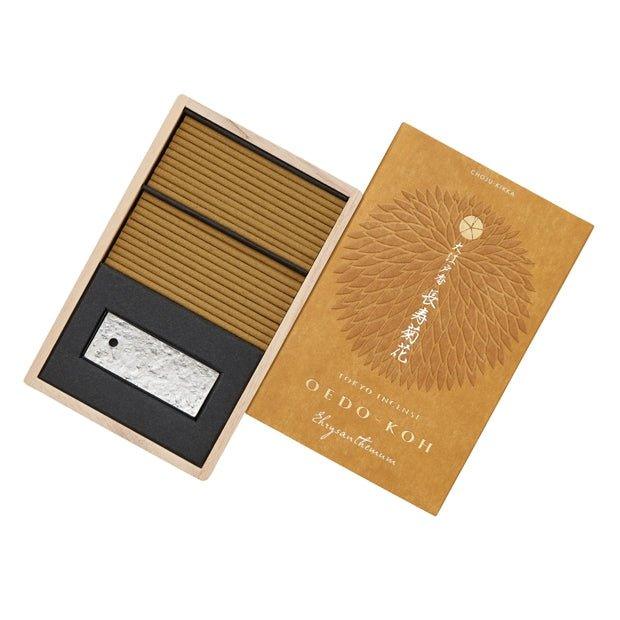Japanese Incense "OOEDO-KOH"
- Regular price
-
$19.00 USD - Regular price
-
- Sale price
-
$19.00 USD
Couldn't load pickup availability
Set of high quality Japanese incense sticks with a holder in 6 different fragrances.
These fragrances have been specially blended to correlate with the folk tales that were told during the Edo Period.
Each incense is colored with traditional colors.
One by one, these products are carefully handcrafted by skilled craftsman in Tokyo.
Made by Nippon Kodo
Nippon Kodo is one of the oldest 's products have unique fragrances. These fragrances come from tying together closely guarded preparation skills that are more than 400 years old with the sensitivities of modern perfumers. They inherited their skills through writings on the mixture of aromatic woods by Takai Juemon, an incense preparer who supplied the Emperor of Japan in Japan's Tensho era (late 16th century). Perfumers with Japan's best noses and instincts interpret and evolve that tradition to create exquisite fragrances.
Stories of the fragrances
- Aloeswood (Purple)
Incense-smelling ceremonies were the practice of court nobles, feudal lords and other wealthy people. Among commoners as well, while they may have lacked access to genuine fragrant woods, there was much fascination with them, and they are frequently featured in works of Kabuki and Joruri theater. The word kyara, meaning aloeswood, even became a general term for “something wonderful.” Hair wax that evokes the scent of aloeswood was extremely popular as well.Experience the fragrance, and understand why it was the most highly prized of scents. - Peony Tree (Red)
The enchanting peony enjoyed enormous popularity in Edo. Its bewitching form is reminiscent of a beautiful geisha, and gazing upon a peony you can almost hear the music and see the dances of the geisha quarter. This was an exclusive world for the privileged few, and it is said that customers’ time spent in teahouses was measured by sticks of incense. The fragrance of the peony, “queen of the flowers” evokes this beautiful and evanescent world. - Cherry Blossoms (Pink) *Currently Unavailable
The custom of cherry blossom viewing took hold during the Edo Period. The somei-yoshino cherry tree, seen in groves throughout Japan today, was originally an ornamental garden variety raised in the village of Somei near Edo. Cherry blossom viewings were also an opportunity for Edo denizens to meet one another, present themselves, and perform : matching fancy kimonos were worn for the occasion, and people sang and danced to celebrate the coming of spring. The captivating scent of cherry blossoms heralds spring’s arrival. - Chrysanthemum (Yellow)
The gardeners of Komagome and Sugamo near Edo are said to have sparked the chrysanthemum craze of the Edo era. Fond of the fancy and spectacular, Edo dwellers loved the beautiful and fragrant flowers, which were displayed or fashioned into various shapes. Chrysanthemums were believed since ancient times to prolong life, and during the Edo Period the Chrysanthemum Festival became a yearly event where people drank chrysanthemum sake infused with medicinal blossoms. The smooth, refreshing scent of chrysanthemum will delight you as it did the denizens of old Edo. - Pine Tree (Green)
It is traditionally believed that the kami (deities) dwell in evergreen trees. The word matsu means both “pine” and “to wait” (for the deity to descend), and the pine is part of the felicitous trio of pine, bamboo and plum tree, and the auspicious pairing of crane and pine. Pine decorations are displayed at New Year’s, and a monumental pine tree is painted on the backdrop of the Noh stage – all expressing the pine’s association with luck and longevity. In ukiyo-e woodcuts, boldly rendered pines standing in the midst of Edo-era people bustling to and fro are a classic motif. Savor the refreshing scent of pine, the tree that guards the travelers’ road and watches over their safe return. - Water Drop(Blue)
In the Edo Period (1603-1868 ) people did not have baths at home, therefore public bath houses were built to meet the need. At first they were steam baths, then large bathtubs were developed. As people were unclothed and co-mingled without regard for age, gender, or rank, the bath house was an egalitarian place. A popular item for these bath house-goers was a scented lotion made with distilled floral essences using a device called "ranbiki." OEDO-KOH Water Drop is a fragrance that has such floral warmth like the moment you step out of bath.
|

























